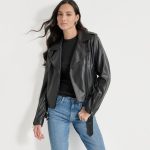Winter’s icy grip demands a jacket that can truly shield you from the cold. But with so many options on the market, choosing the warmest one can feel overwhelming. Fear not! Which jacket is most warmest in winter? This guide will delve into the factors that determine a jacket’s warmth, explore various types of jackets, and help you make an informed decision.
Understanding the Factors that Influence Warmth
Before we dive into specific jacket types, let’s understand the key factors that contribute to a jacket’s ability to keep you warm:
Insulation
Insulation is the core component that traps heat and prevents it from escaping. There are two primary types:
- Down Insulation: Derived from the soft under feathers of ducks or geese, down is renowned for its exceptional warmth-to-weight ratio. It’s incredibly lightweight yet provides superior insulation. However, it loses its insulating properties when wet.
- Synthetic Insulation: Made from various synthetic fibers, synthetic insulation offers good warmth and retains its insulating capabilities even when damp. It’s also generally more affordable than down.
Shell Fabric
The outer layer of the jacket, known as the shell fabric, plays a crucial role in protecting you from the elements.
- Waterproofing: A waterproof shell keeps you dry in rain and snow, preventing moisture from seeping in and compromising the insulation.
- Windproofing: A windproof shell blocks cold winds, further enhancing the jacket’s warmth.
Fit
The fit of the jacket is equally important.
- Too Tight: A jacket that’s too tight restricts movement and compresses the insulation, reducing its effectiveness.
- Too Loose: A jacket that’s too loose allows cold air to circulate, negating the insulation’s purpose.
- Just Right: A jacket with a comfortable fit traps warm air close to your body while allowing for ease of movement.
Exploring the Warmest Jacket Types
Now that we understand the key factors, let’s explore some of the warmest jacket types available:
1. Down Jackets
Down jackets are a classic choice for winter warmth. They’re incredibly lightweight, packable, and offer exceptional insulation. Look for jackets with a high fill power, which indicates the quality and loft of the down. Additionally, choose a jacket with a water-resistant or waterproof shell to protect the down from moisture.
2. Parkas
Parkas are longer jackets that typically extend to the mid-thigh or knee. They provide excellent coverage and protection from the elements. Many parkas feature a combination of down or synthetic insulation, a waterproof shell, and a fur-trimmed hood for added warmth.
3. Synthetic Insulated Jackets
Synthetic insulated jackets are a versatile and reliable option for winter. They offer good warmth, even when wet, and are often more affordable than down jackets. Look for jackets with high-quality synthetic insulation like PrimaLoft or ThermoBall.
4. Fleece Jackets
Fleece jackets are made from soft, synthetic fibers that trap air and provide warmth. They’re breathable, quick-drying, and ideal for layering. While not as warm as down or synthetic insulated jackets on their own, fleece jackets add an extra layer of insulation when worn underneath.
5. Hybrid Jackets
Hybrid jackets combine different materials to offer the best of both worlds. They often feature down or synthetic insulation in the core areas for warmth and a more breathable or stretchy fabric in the arms and sides for ease of movement.

Choosing the Right Jacket for Your Needs
The warmest jacket for you depends on your specific needs and activities. Consider the following factors:
- Climate: If you live in a region with harsh winters, you’ll need a jacket with maximum insulation and protection from the elements. A down parka or a synthetic insulated jacket with a waterproof shell would be ideal.
- Activity Level: If you’re highly active outdoors, you’ll need a jacket that’s breathable and allows for ease of movement. A hybrid jacket or a fleece jacket layered under a shell might be a good choice.
- Budget: Down jackets tend to be more expensive than synthetic insulated jackets. Set a budget beforehand and explore options within your price range.
- Style: Jackets come in various styles and colors. Choose one that complements your personal taste and wardrobe.
Additional Tips for Staying Warm
Besides choosing the right jacket, here are some additional tips for staying warm in winter:
- Layer Up: Layering allows you to adjust your clothing according to the temperature. Start with a base layer that wicks away moisture, add an insulating layer like fleece or down, and finish with a waterproof and windproof outer layer.
- Cover Your Extremities: Your head, hands, and feet are prone to heat loss. Wear a warm hat, gloves, and insulated boots to keep them cozy.
- Stay Dry: Moisture can significantly compromise your warmth. Choose waterproof or water-resistant outerwear and avoid getting wet.
- Stay Active: Moving your body generates heat. Engage in physical activities to stay warm.
- Eat and Drink: Fuel your body with nutritious food and warm beverages to maintain your internal temperature.
Choosing the warmest jacket for winter involves considering various factors, including insulation type, shell fabric, fit, climate, activity level, budget, and style. By understanding these elements and exploring the different jacket types available, you can make an informed decision and stay comfortably warm throughout the winter season.
Remember, the warmest jacket is the one that best suits your individual needs and preferences. So, take your time, do your research, and invest in a jacket that will keep you cozy and protected, no matter how cold it gets.

Beyond Jackets: Additional Winter Warmth Accessories
Which jacket is most warmest in winter? While a warm jacket is crucial, don’t overlook the importance of other winter accessories that can significantly enhance your comfort and protection from the cold.
1. Hats
A significant amount of body heat escapes through the head, so wearing a hat is essential in winter. Choose a hat that covers your ears and provides adequate insulation. Options like beanies, trapper hats, or even balaclavas can offer varying levels of warmth depending on the severity of the weather.
2. Gloves or Mittens
Keeping your hands warm is vital for dexterity and overall comfort. Gloves offer individual finger movement, while mittens tend to be warmer as they trap heat more effectively. Consider the activities you’ll be doing and the temperature to choose the right option. For extreme cold, layering gloves under mittens can provide maximum warmth.
3. Scarves or Neck Gaiters
A scarf or neck gaiter adds an extra layer of insulation around your neck, preventing cold air from seeping in and keeping your core warm. Choose a material that’s soft, breathable, and provides adequate warmth. Fleece, wool, or even synthetic blends can be excellent options.
4. Thermal Base Layers
Wearing thermal base layers next to your skin helps wick away moisture and adds an extra layer of insulation. Look for base layers made from merino wool or synthetic fabrics designed for moisture-wicking and warmth.
5. Insulated Boots
Your feet are in direct contact with the cold ground, so insulated boots are crucial for staying warm and comfortable. Choose boots with adequate insulation, waterproof or water-resistant materials, and good traction to prevent slips on icy surfaces.
Caring for Your Winter Jacket
Proper care can extend the lifespan of your winter jacket and ensure it continues to provide optimal warmth for years to come. Follow these tips:
- Read the care label: Always follow the manufacturer’s instructions for washing and drying your jacket.
- Wash less frequently: Frequent washing can degrade the insulation and water-repellent coating. Spot clean stains whenever possible.
- Use gentle detergent: Avoid harsh detergents or bleach, which can damage the fabric and insulation.
- Air dry: Hang your jacket to air dry whenever possible. Avoid using high heat in the dryer, which can shrink or damage the jacket.
- Store properly: Store your jacket in a cool, dry place during the off-season. Avoid storing it in a compressed or damp environment.

Final Thoughts
Which jacket is most warmest in winter? Choosing the warmest jacket for winter is an investment in your comfort and well-being. Don’t rush the decision. Take your time to consider your needs, explore different options, and prioritize quality and functionality.
Remember, the best jacket is the one that keeps you warm, dry, and comfortable, allowing you to enjoy winter to the fullest. So, make an informed choice and stay cozy all season long.



